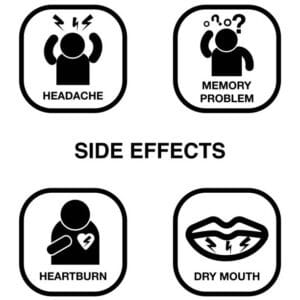The New Hope: What’s next hair loss research.
Oh wow, there are millions of people in the world who are experiencing hair loss and searching for something effective and lasting. Conditions like androgenetic alopecia (pattern baldness) and the autoimmune disorder alopecia areata may seem like just hair loss, but they can have a very personal and psychological impact.
But the scientific landscape is shifting. Have you read all the latest research and clinics updates? Apparently, hair loss will be a thing of the past if the industry has its way, with maybe even a few bold claims of reversal.
We’ve past nourishing our skin with lotions or other supplements to using technology. The developments in this month are not incremental. They are game changers in three key areas. Powerful autoimmune drugs, intelligent diagnostics and hair follicle regeneration science. Let’s explore the breakthroughs making headlines.
The JAK Inhibitors are Heard to Regulate the Attack on Follicles.
Patients with alopecia areata (AA) – the immune condition where the body attacks the hair follicles – can benefit from a new class of JAK inhibitors over the last few years. These drugs are the bad ass blockers that stop specific pathways out of the Janus kinase (Or JAK for short) pathways that cells use to communicate. In AA, this signal is what triggers the immune attack. The attack is calmed down by inhibiting it, and there is a chance to regrow the follicles.
In late October 2025, Pfizer delivered positive news about long-term data from its Phase 3 trials of ritlecitinib (Litfulo™). A study was carried out to evaluate the continuing effect and safety of the FDA-approved drug for twenty-four months. According to data released today at an important European dermatology congress, a large proportion of patients (including adolescents and adults) who responded to the treatment maintained their hair regrowth with many seeing continued improvements beyond 1 year.
This is critical. No one knows if a drug will work in the long-term. This data shows that ritlecitinib provides not just transient but durable relevant effects in patients with severe alopecia areata. It makes JAK inhibitors the new norm of treatment and a transformative option for a patient population that had very few treatments until a while ago.
The 2025 European Academy of Dermatology and Venereology (EADV) Congress presented long-term extension study data for ritlecitinib.
Using AI in Dermatology for Faster Diagnosis and Treatment
Determining the actual diagnosis is one of the biggest challenges in hair loss treatment. Is it genetic? Is it autoimmune? Is it stress-related (telogen effluvium)? Or is it a rarer scarring alopecia? A misdiagnosis can lead to ineffective treatment for several months or years. This is where Artificial Intelligence is stepping in.
Researchers in South Korea had developed a new model using deep learning, as highlighted by a study published just week in Nature Communications. This artificial intelligence was trained on thousands of clinical scalp images (trichoscopy images) associated with established diagnostic confirations. The findings were incredible, as it turns out, the AI was able to distinguish between types of alopecia— androgenetic alopecia (AGA), alopecia areata (AA), and scarring alopecia (SA) with a reported accuracy of over 95%.
The implications are immediate. A patient walks into a general practitioner or a dermatologist. The handheld scope from a doctor can quickly identify something’s diagnosis. They can pass it through the AI model and receive a high degree diagnostic probability within seconds and not only rely on visual inspection. This allows the correct management to be initiated immediately with a high chance of success. A JAK inhibitor for AA, minoxidil for pattern baldness or steroid for a scarring condition all have a much better chance if started fast.
According to an article published in Nature Communications or JAMA Dermatology at the end of 2025 that elaborated on the diagnostic power of a deep learning model in trichoscopy.
Stem Cells and the “Holy Grail”: Follicle Neo-Genesis
While JAK inhibitors save existing follicles and AI helps to diagnose them, the Holy Grail of hair loss research has always been ‘follicle neo-genesis’, or the creation of entirely new, functioning hair follicles in areas that have been permanently lost. Stem Cell Research is a notoriously difficult research domain.
A team at Japan’s RIKEN research institute announced a major breakthrough in late October. In its recent works, the organisation has improved on a previous procedure to culture induced pluripotent stem cells (iPSCs) and instruct those cells to become hair follicle germs or the very seeds from which a new hair follicle grows.
In their latest paper, the authors show they can produce these bioengineered follicle germs in larger, more uniform batches. Apparently, when these germs were put in lab models, they were able to connect with the surrounding skin (such as nerves and blood vessels) and grow hair. The hair was fully mature, pigmented, and cycled like a natural hair cycle. Although human trials are still on the cards, this systematic and reproducible method is a first and required step toward stem cell hair therapy being clinical. The question is no longer if we can grow new follicles. It’s when we can do it safely and at scale for humans.
It’s clear that once again, humans have no idea what’s going on inside the womb.
I pay close attention to the hair loss space with training and been very sympathetic and as such, I have noticed the change has been quite dramatic in late 2025.
It’s tangible. The field for years was stagnant, with 2 or 3 drugs with meagre effect. What we are seeing now is a true paradigm shift.
JAK inhibitors are already changing lives with initial approval. AI’s diagnostic power will democratize expert skills, making sure more people get the right treatment from the start. And while stem cell promises of the future remain merely that – promises – the gradual scientific progress occurring at institutes like RIKEN proves that the future is not a dream.
We are at an inflection point. The combination of immunology, AI, and regenerative medicine is unveiling the biology of the hair follicle. The main thing to remember here is one of optimism — science is catching up. The future looks bright for people with hair loss and hopefully a lot fuller.




